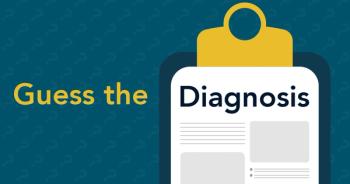
- October 2025
- Volume 41
- Issue 7
Psychosocial screening of adolescents: Using the HEADS FIRST Checklist, part 2
Explore effective techniques for gathering psychosocial histories from adolescents using the HEADS FIRST Checklist to enhance mental health interventions.
This is the second of a
Home: The 3 leading sources of stress in an adolescent’s life are typically problems at home, at school, or with their friends. In many instances, teenagers struggling in these or other areas may be unable to open up to others. They often hope that the clinician will initiate discussions on such matters. Accordingly, we ask, “Are you having any problems with your family?” and then pause for their answer. If they say no, the examiner can move on to the next topic. If they say yes, we follow up with open-ended questions and explore their responses. It is important to be sensitive to the fact that seemingly minor or trivial concerns raised by the adolescent may be a “big deal” to them and/or their family members. The clinician should gently probe the adolescents’ concerns and determine whether additional guidance is indicated.
Education: “Are you having any problems at school?” Once again, if they say yes, we explore their answer by asking them to tell us about those problems. If they do not attend school, then this question can address employment if they are employed. Academic expectations, study habits, and achievement may be points of contention between adolescents and their families. Pediatric practitioners are in an ideal position to uncover any underlying conditions that may be contributing factors. The COVID-19 pandemic’s effect on teenagers’ mental health must be considered “a given,” including feelings of loneliness, isolation, depression, anxiety, and fears about the future that may interfere with learning.1 A sudden decline in academic performance is a red flag that something may be amiss, including the onset of a physical condition or an acute stressor (eg, bullying, ostracization, change in teachers or schools, family concerns, death of a close friend or relative, or substance use).2
Abuse: The purpose of screening for abuse on a routine basis is to prevent ongoing distress and/or injury to the patient and potentially others (eg, siblings). This topic should be incorporated into the annual health supervision visit per current American Academy of Pediatrics (AAP) guidelines.3 No subject is more sensitive, nor more important, than this. In-person or online bullying, sex trafficking of adolescents, and the Me Too movement have shed new light on this serious problem of longstanding duration. We have been screening for abuse in our office since the early 1990s at the suggestion of a third-year medical student. We simply ask, “Has anyone ever abused you by their actions or their words?” If the patient says yes, we ask if it was verbal, emotional, physical, or sexual abuse. We then gently probe the adolescent’s perception regarding any form of abuse that they have experienced and proceed with appropriate guidance or additional help as indicated.
Drugs: The AAP recommends universal screening for drug use in pediatric primary care settings.3 There are many ways to obtain this history described in the literature, such as the CRAFFT (Car, Relax, Alone, Forget, Friends, Trouble) substance abuse screening test.4 Our trigger question is “Ever use e-cigs, tobacco, alcohol, marijuana, opioids, or other drugs to relax or get high?” If the patient says yes, we ask about the duration, amount, and frequency of use for any drugs specified. We find it helpful to categorize the pattern of use as experimentation, self-medication to treat underlying psychiatric issues, addiction, or any combination of the above. Management varies with each category and must be individualized to meet the needs of each patient. It must be stressed that all patterns can have serious adverse sequelae, and it should not be assumed that casual drug use is always benign.5 Even first-time use can lead to a tragic event, and the craving induced by just one pill can lead to a life of dependency, especially with highly addictive substances such as opioids.5,6
Safety: We believe that “Do you wear a seatbelt regularly?” is the most important safety question generic to all adolescents. About half of young adult drivers and passengers killed in car crashes are unrestrained, and it is universally recognized that seatbelts can dramatically reduce the risk of death or serious injury.7,8 The routine checkup gives pediatric practitioners an ideal opportunity to reinforce the importance of consistent seatbelt use to their young adult patients as recommended by the AAP.9 More specific safety risk factors can be addressed as they are uncovered by responses to other questions on the HEADS FIRST Checklist. For example, parents/guardians of adolescents who have depression should be advised to keep any guns at home locked up and unloaded, with the ammunition inaccessible to their teenager.10
Friends: The special insight pediatric practitioners have into adolescent development should help determine the significance of any “yes” responses to the question, “Are you having any problems with your friends?” Understanding the nature of changing interpersonal relationships during adolescence is key to putting positive responses into proper context. For example, what may seem like a serious issue to some teenagers may be of little or no clinical significance to the examiner and vice versa. It must be stressed that the patient’s feelings should always be addressed and never be dismissed as inconsequential. Unresolved emotional pain and suffering may build up over time and reach a critical point in unpredictable ways. Of equal or even greater importance is that adolescents may act on impulse to resolve concerns, whether real or perceived. In some instances, this can have tragic consequences, such as suicide.
Peer pressure, magnified through social media, can be intense, with the need to belong and the desire for acceptance being overwhelming for some youth. This may sometimes lead to engagement in risk-taking behaviors as a desperate means to fit in. Some teenagers may begin to drift away from peers, suggesting potential isolation and the accompanying risks of depression, anxiety, or some other acute stressor. Many such concerns have been exacerbated by the COVID-19 pandemic, which has affected young people’s mental health disproportionately.11 Loneliness has also emerged as a particularly salient pandemic psychosocial outcome to understand.11 However, loneliness should not be equated with being a loner, as some adolescents engage in solitude by choice as a positive experience.12 Although not everyone needs a best friend, lack of a confidant or trusted friend is of particular concern for those who are struggling with depression and may be a risk factor for harming themselves or others.13
Image: Self-image is a complex blend of how others view adolescents and how they feel about themselves. Routine screening for eating disorders and gender identity concerns is recommended by the AAP.3 We ask, “Do you have any questions or concerns about your looks, appearance, or gender identity?” Expect a wide range of answers from worries about a few small pimples to severely distorted body image. The latter may seem very real to the adolescent, just as the image we may see when looking into a carnival mirror. If their answer indicates concern about their body size and/or shape, follow-up questions to explore the possibility of an eating disorder should be asked. For patients who disclose body image concerns, we explain how powerful and all-consuming these feelings can be and that we are committed to seeking common ground by meeting them where they are at as a starting point to help them achieve health. Ignoring their perception can be counterproductive and may compromise the examiner’s credibility in the patient’s eyes.
The second part of the “I” question concerns gender identity. In addition to “Do you have any concerns about your gender identity?”, one may simply ask, “What is your gender identity?” Only a few years ago, this topic was commonly overlooked or even considered off-limits by many pediatric practitioners. Now it should be considered a routine component of comprehensive adolescent health care.3 The regular checkup may be the only chance to identify adolescents who are struggling with gender identity and have no one in whom to confide.
Adolescents who identify as transgender or who express gender-diverse feelings should be cared for as per AAP recommendations.14 These youth are at disproportionate risk for adverse sequelae, including substance abuse, sexually transmitted infections (STIs), and mental health issues, including suicide.15,16 It must be stressed that such health disparities are not inherent to transgender identity and are not inevitable.17 Furthermore, transgender identities and diverse gender expressions do not constitute a mental disorder.14 If a mental health issue exists, it most often stems from stigma and negative experiences rather than being intrinsic to the adolescent.14
Recreation: It’s enjoyable to talk to teenagers about “What do you do for fun and exercise?” Again, this can be a good buffer question before getting into more sensitive areas. The answer to this question provides insight into their daily routines, helping to assess whether they are engaging in sufficient physical activity and/or spending too much time on sedentary activities, including too much screen time. Specific advice can be given when needed as per AAP guidelines, such as the importance of wearing a helmet while riding a bicycle, etc.3
Online safety and cybersecurity strategies are also important topics for families to discuss.18 Especially for younger teenagers, anticipatory guidance should be provided about the dangers of sharing photos online, particularly nude photos, and talking with strangers. Harm reduction strategies, including setting limits, technology-free zones, providing alternatives, modeling healthy behavior, and maintaining open lines of communication, are also indicated if screen time is excessive, content viewed is inappropriate, or if use of social media is otherwise problematic.19
Sexuality: We ask, “Have you ever had any sexual experiences or concerns?” If the patient does have a history of sexual experiences, we ask whether partners were boys, girls, or both, including whether partners were transgender. We ask what types of experiences they have had and whether the experiences were mutually consensual and respectful. Despite making up only a quarter of the sexually active population, adolescents account for approximately half of new STIs in the United States every year.20 Routine laboratory screening for common STIs is indicated for all sexually active adolescents as recommended by the CDC.21 Counseling and screening should be tailored to individual needs. It is important to determine whether there has been oral, genital, and/or anal contact so that screening for gonorrhea and chlamydia can be obtained at all sites of contact.21 Blood should be sent for HIV and syphilis testing as recommended per current CDC guidelines.21 A pregnancy test should be obtained for all patients with a uterus if there is concern for pregnancy. We stress the importance of consistent barrier protection for all forms of sexual contact. Contraceptive counseling should be offered for patients at risk of pregnancy, including the recommendation for dual-method contraception. We also discuss the availability and indications for emergency contraception with all boys and girls, regardless of their gender identity or sexual orientation, in case they or someone they know is the victim of sexual assault or an unexpected sexual exposure.
The most recent CDC STI guidelines suggest that practitioners consider opt-out chlamydia and gonorrhea screening (ie, the patient is notified that testing will be performed unless the patient declines, regardless of reported sexual activity, for adolescent and young adult women during clinical encounters).21 Cost-effectiveness analysis indicates that opt-out chlamydia screening among adolescent and young adult women might substantially increase screening, be cost saving, and identify infections among patients who do not disclose
sexual behavior.21
Threats: We screen for threats of harm to self or others by asking, “Do you get depressed or upset easily?” If the patient answers yes, we ask him or her to “tell me about this” to get a sense of the severity of their thoughts and how they are coping with them. We specifically ask about thoughts of suicide, feelings of hopelessness, previous suicide attempts, or any history of self-inflicted injury such as cutting, burning, or abrasions. Such acts of self-harm are often not a suicide attempt but rather an attempt to feel better or to distract from painful emotions. However, any suicidal ideation or behavior must always be taken seriously and explored to determine whether the adolescent has a specific plan and whether they have the intent to attempt suicide. We additionally ask whether they have felt like hurting someone else. Adolescents who have active suicidal or homicidal ideation require immediate intervention by mental health experts, legal authorities, or both, along with parental involvement.
The fact that stress, anxiety, and depression are significant sources of morbidity and mortality for adolescents cannot be overstated. Accordingly, the US Surgeon General and AAP have declared a national mental health crisis among youth.22,23 This concern is underscored by the fact that nearly 10% of American high schoolers attempted suicide in 2023.24 The increased emotional, physical, social, and academic demands of adolescence may unmask or exacerbate mental health concerns, which may be compounded for refugee youth, youth from cultural minority groups, or youth from sexual or gender minority groups. Concerns about screen time and social media use, as discussed above, have added a layer of complications, including issues of bullying, privacy, and sexting. Teens are especially vulnerable to online sextortion scams that may result in an acute mental health crisis and suicidal acts.25
Summary
The psychosocial history should be considered an essential component of the annual checkup for adolescents. The HEADS FIRST Checklist highlights the priority of including this history as part of routine adolescent health care. It also underscores the value of utilizing a proactive, rather than reactive, approach to identify teenagers at risk for serious illness, injury, and/or death. The checklist gives the busy pediatric practitioner an up-to-date yet organized and concise framework to address major causes of morbidity and mortality among youth. Early recognition can be crucial to obtaining timely intervention and an optimal outcome. The checklist can and should be implemented within a strengths-based paradigm with encouragement for those who are making healthy choices. It is a unique privilege to have an opportunity to make a difference in the lives of not only present but also future generations. Our commitment to comprehensive adolescent health services is essential, and the time to act is now. We must be prepared to meet the moment.
References
- Fehkührer S, Humer E, Kaltschik S, et al. Young people and the future: school students' concerns and hopes for the future after one year of COVID-19 in Austria-findings of a mixed-methods pilot study. Healthcare (Basel). 2023;11(16):2242. doi:10.3390/healthcare11162242
- Chahal M, Telsem M, Das B, et al. Factors affecting school performance in the adolescents of USA- Youth Risk Behavior Surveillance System. Eur Psychiatry. 2022;65(suppl 1):S226. doi:10.1192/j.eurpsy.2022.587
- Hagan JF Jr, Shaw JS, Duncan PM, eds. Bright Futures: Guidelines for Health Supervision of Infants, Children, and Adolescents. 4th ed. American Academy of Pediatrics; 2017.
- Knight JR, Sherritt L, Shrier LA, Harris SK, Chang G. Validity of the CRAFFT substance abuse screening test among adolescent clinic patients. Arch Pediatr Adolesc Med. 2002;156(6):607-614. doi:10.1001/archpedi.156.6.607
- Friedman J, Hadland SE. The overdose crisis among U.S. adolescents. N Engl J Med. 2024;390(2):97-100. doi:10.1056/NEJMp2312084
- Gonzalez L. Managing opioid use disorder in the pediatrician’s office. Presented at: American Academy of Pediatrics National Conference and Exhibition; September 16-19, 2017; Chicago, IL.
- Traffic safety facts 2019 data: occupant protection. National Highway Traffic Safety Administration. September 2021. Accessed August 1, 2025. https://crashstats.nhtsa.dot.gov/Api/Public/Publication/813176
- Acosta-Rodriguez L, Kwigizile V, Oh JS, Gates T. Presence of additional safety belt enforcement increases safety belt use by drivers. Transp Res Rec. 2020;2674(3):93-99. doi:10.1177/0361198120908225
- Alderman EM, Johnston BD; Committee on Adolescence; Council on Injury, Violence, and Poison Prevention. The teen driver. Pediatrics. 2018;142(4):e20182163. doi:10.1542/peds.2018-2163
- Lee LK, Fleegler EW, Goyal MK, Doh KF, Laraque-Arena D, Hoffman BD; Council on Injury Violence and Poison Prevention. Firearm-related injuries and deaths in children and youth: injury prevention and harm reduction. Pediatrics. Published online October 8, 2022. doi:10.1542/peds.2022-060070
- Thakur H, Stutts M, Choi JW, Temple JR, Cohen JR. Adolescent loneliness during the COVID-19 pandemic: the role of pre-pandemic risk factors. Child Indic Res. 2023;16(2):617-639. doi:10.1007/s12187-022-09984-8
- Thomas V, Azmitia M. Motivation matters: development and validation of the Motivation for Solitude Scale - Short Form (MSS-SF). J Adolesc. 2019;70:33-42. doi:10.1016/j.adolescence.2018.11.004
- McNairn JDK, Cavanaugh RM Jr, Rosenbaum PF. Lack of a confidant: an important marker for getting depressed or upset easily and having thoughts of self-harm in adolescents. Presented at: Society for Adolescent Medicine Annual Meeting; March 24-28, 2004; St Louis, MO.
- Rafferty J; Committee on Psychosocial Aspects of Child and Family Health; Committee on Adolescence; Section on Lesbian, Gay, Bisexual, and Transgender Health and Wellness. Ensuring comprehensive care and support for transgender and gender-diverse children and adolescents. Pediatrics. 2018;142(4):e20182162. doi:10.1542/peds.2018-2162
- Johns MM, Lowry R, Andrzejewski J, et al. Transgender identity and experiences of violence victimization, substance use, suicide risk, and sexual risk behaviors among high school students — 19 states and large urban school districts, 2017. MMWR Morb Mortal Wkly Rep. 2019;68(3):67-71. doi:
10.15585/mmwr.mm6803a3 - Parker JN, Choi SK, Bauermeister JA, Bonar EE, Carrico AW, Stephenson R. HIV and sexually transmitted infection testing among substance-using sexual and gender minority adolescents and young adults: baseline survey of a randomized controlled trial. JMIR Public Health Surveill. 2022;8(7):e30944. doi:10.2196/30944
- Shumer D. Health disparities facing transgender and gender nonconforming youth are not inevitable. Pediatrics. 2018;141(3):e20174079. doi:10.1542/peds.2017-4079
- Samreen A, Ahmad A, Zeshan F, Ahmad F, Ahmed S, Khan ZA. A collaborative method for protecting teens against online predators over social networks: a behavioral analysis. IEEE Access. 2020;8:174375-174393. doi:10.1109/access.2020.3007141
- Council on Communications and Media. Children, adolescents, and the media. Pediatrics. 2013;132(5):958-961. doi:10.1542/peds.2013-2656
- Shannon CL, Klausner JD. The growing epidemic of sexually transmitted infections in adolescents: a neglected population. Curr Opin Pediatr. 2018;30(1):137-143. doi:10.1097/MOP.0000000000000578
- Workowski KA, Bachmann LH, Chan PA, et al. Sexually transmitted infections treatment guidelines, 2021. MMWR Recomm Rep. 2021;70(4):1-187. doi:10.15585/mmwr.rr7004a1
- AAP-AACAP-CHA declaration of a national emergency in child and adolescent mental health. American Academy of Pediatrics. October 19, 2021. Accessed August 1, 2025. https://www.aap.org/en/advocacy/child-and-adolescent-healthy-mental-development/aap-aacap-cha-declaration-of-a-national-emergency-in-child-and-adolescent-mental-health/
- Abbasi J. Surgeon general sounds the alarm on social media use and youth mental health crisis. JAMA. 2023;330(1):11-12. doi:10.1001/jama.2023.10262
- Verlenden JV, Fodeman A, Wilkins N, et al. Mental health and suicide risk among high school students and protective factors - Youth Risk Behavior Survey, United States, 2023. MMWR Suppl. 2024;73(4):79-86. doi:
10.15585/mmwr.su7304a - Wolak J, Finkelhor D, Walsh W, Treitman L. Sextortion of minors: characteristics and dynamics. J Adolesc Health. 2018;62(1):72-79. doi:10.1016/j.jadohealth.2017.08.014
Articles in this issue
about 2 months ago
Screening for suicide ideation and suicide attempts is a priority2 months ago
Letter from the editor, October 20252 months ago
5-week-old with blood under the tongue2 months ago
Vaccines remain the cornerstone of child health2 months ago
Physicians give AI scribes a thumbs-upNewsletter
Access practical, evidence-based guidance to support better care for our youngest patients. Join our email list for the latest clinical updates.









